Was There Ever a Creature Bigger Than the Blue Whale
Key Points:
- From fossil evidence, scientists discovered that no shark in existence compares to the extinct megalodon, which had a body mass up to 30X greater than all other related sharks!
- The megalodon's fiercest competitor was the Livyatan, a creature comparable to the killer whale, which was about the same size as the massive shark, weighing an estimated 100,000 pounds and reaching up to 57 feet in length.
- Recent research suggests that the great white shark, a fraction of the size of a megalodon, actually helped cause its extinction by competing with juvenile megalodons and hunting smaller whales that were the megalodon's primary prey.
Hundreds of years ago, something peculiar happened…
People started findingdragon teethalong the creeks and the shores of oceans. Big, six-inch-longdragon teeth.
How could that be possible? Well, today we know they were really finding teeth from megalodon (Otodus megalodon), the largest shark to ever live.
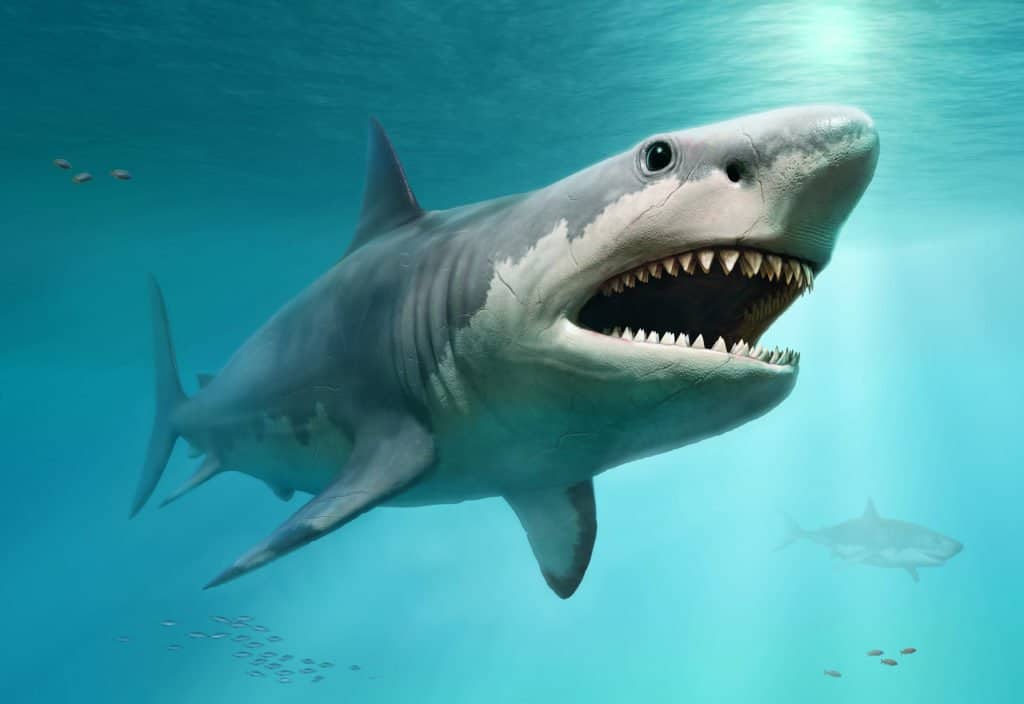
Warpaint/Shutterstock.com
Just how impressive was megalodon? For starters, the shark may have been20 to 50X the size of today'slargestgreat white sharks.And, no, that's not a typo. While the largest great white sharks found today weigh about 5,000 pounds…
'Conservative' estimates of megalodon's size place its maximum size at 47,960 kg (105,733 lbs). Larger maximum size estimates place megalodon's highest potential weight at 103,197 kg (227,510 lbs).
(Which, for perspective, a single megalodon was the weight of about 1,250 fully grown adults!)
Just this week, brand-new research was published on megalodon.
The incredible conclusion?There's simply no other predatory shark that's comparable.
The largest other shark in megalodon's 'order' reached just 7 meters (23 feet), just half megalodon's length anda fractionit weight. This led the authors of the study to declare megalodon had "off-the-scale gigantism."
Translation: there's simplyno sharkwe've ever found fossil evidence of that compares to megalodon. Its's 10 times, 20 times, even 30X the mass of all other related sharks!
Yet, megalodon was far from the only ancient 'giant of the deep' that scientists have uncovered. Below, you'll find 5 different giants of the sea that sometimes could be even larger (and potentially even more deadly predators)than megalodon itself!
Megalodon vs.Mosasaurus
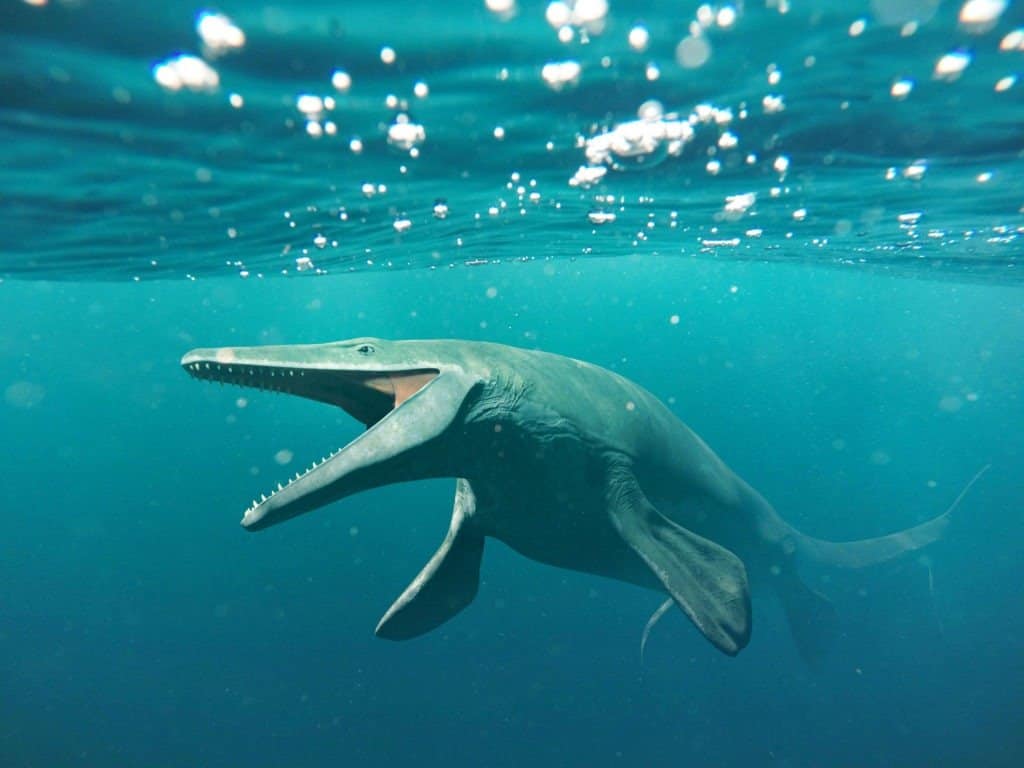
Dotted Yeti/Shutterstock.com
In the Cretaceous period (145.5 to 65.5 million years ago), a species of simplymassiveaquatic lizards roamed the world's waterways.
The genus Mosasaurus was a group of reptiles that became apex predators during this time and grew to lengths recent estimates (Grigoriev, 2014)place at 56 feet. At the time, theMosasauruswouldn't have encountered any sharksnearlythe size of megalodon, although they would have had plenty of competition from other apex predators of the time such asPlesiosaurus.
The Mosasaurus had 250 teeth, and scientists estimate its bite force at around 13,000 to 16,000 psi. The size of their jaws would have made them predators of smaller sea animals than the megalodon. They would have used ambush tactics to take their prey by surprise on the surface of the deep.
Wondering who would win in a fight between pitting megalodon vs. Mosasaurus? We compared the two animals and which would win in a battle. It was a nail biter, but one of these two deep sea giants came out on top!
Megalodon vs.Livyatan
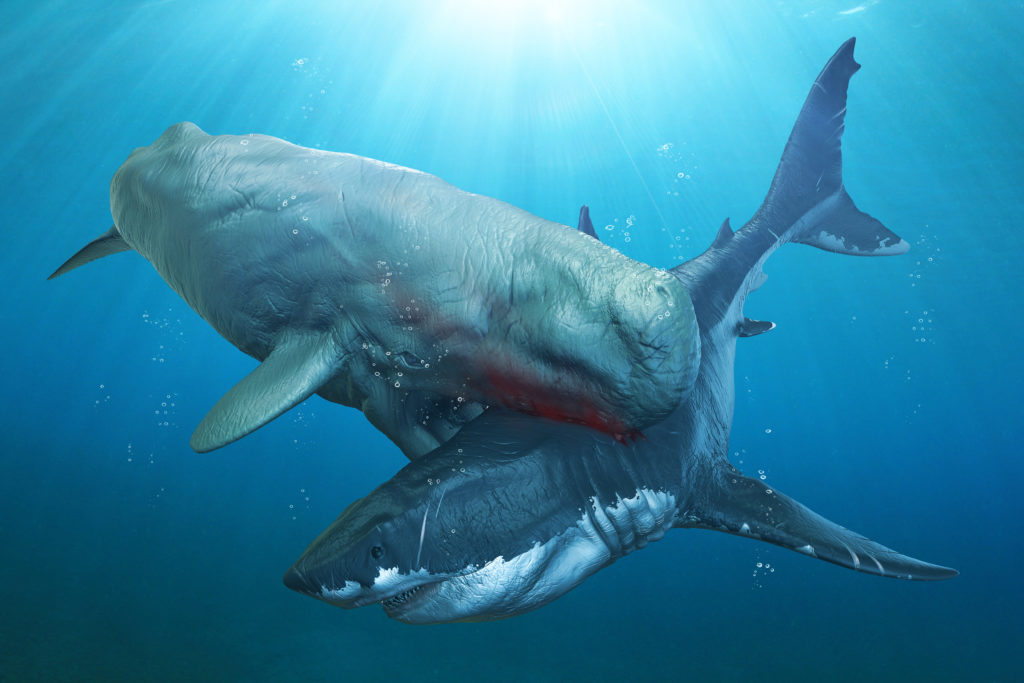
While megalodon was an order of magnitude larger than other sharks in its era, it faced competition from animals likeLivyatan.
In today's oceans, the emergence of killer whales sometimes make great white sharks flee incredible distances. In one encounter, after killer whales entered a great white's hunting ground off California, the shark fled all the way to Hawaii! Like today's largest sharks, megalodon also faced competition from a giant whale that hunted the same prey.
Its name wasLivyatan,and it was a ferocious competitor to megalodon.Livyatan was about the same size as the massive shark, weighing an estimated 100,000 pounds and reaching up to 57 feet in length. In addition,Livyatanhad incredibly large teeth that reached over a foot in length, making them the largest known biting teeth of any animal!
Like megalodon,Livyatanis believed to have died out between 3.6 and 2.6 millon years ago. It's likely the two apex predators both struggled to adapt to climate change and the loss of their primary prey of small-to-medium size whales.
Megalodon vs. Great White Shark
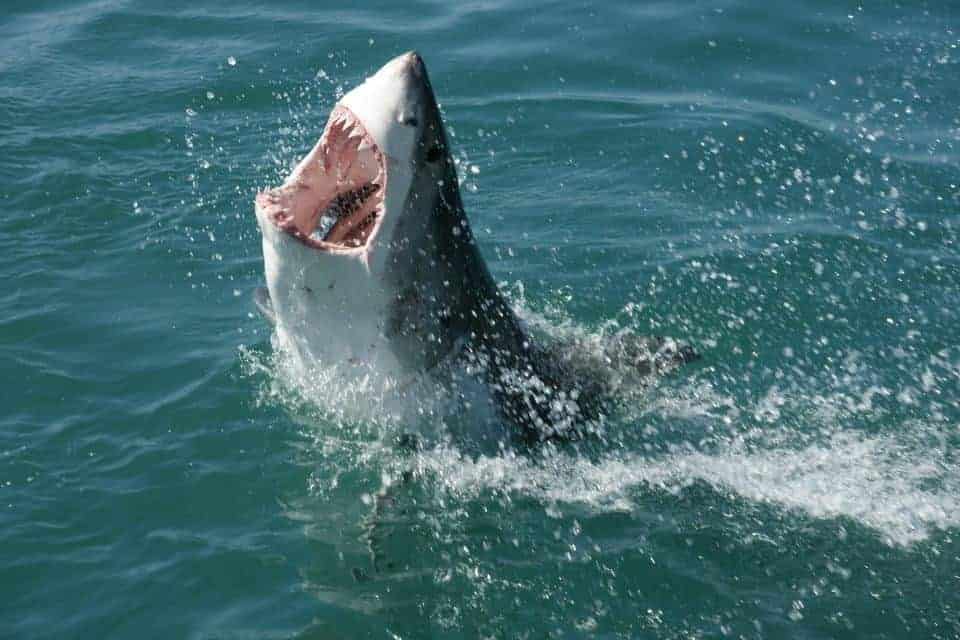
Travelbag Ltd / Flickr
Size-wise, the matchup of a megalodon vs. a great white shark isno contest.After all, megalodon's were 'conservatively' estimated to weigh up to 100,000 pounds while great white sharks rarely grow to more than 5,000 pounds.
However, when it comes to survival,bigger isn't always better.Recent research proposes that the much smaller great white shark actually helped cause the megalodon's extinction!
The theory is that around the time when megalodon were struggling to adapt to cooling ocean climates, great white sharks evolved and began competing with juvenile megalodons and hunting smaller whales that were the megalodon's primary prey. With both megalodon andLivyatangoing extinct 2.6 to 3.6 million years ago, great white sharks and killer whales were left as much smaller apex predators of the seas.
Without the presence of massive predators, whales that filter-feed began growing to massive sizes. In fact, this development led to the evolution of the largest animal to ever live on Earth…
Megalodon vs. Blue Whale
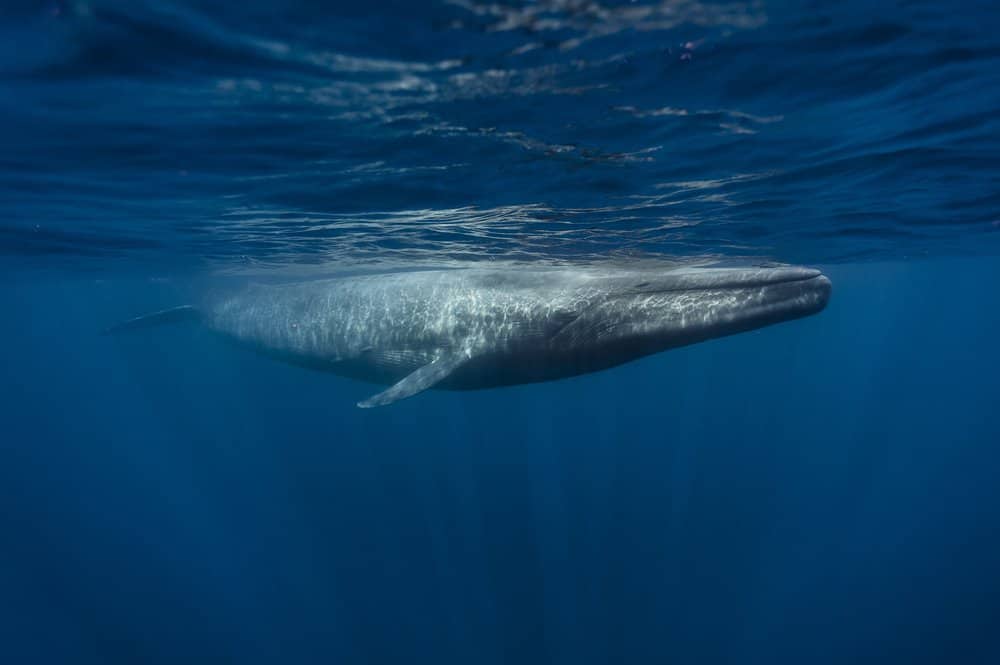
Andrew Sutton/Shutterstock.com
The megalodon and blue whale never met, as the earliest fossils of 'modern' blue whales date back to roughly 1.5 million years ago. That's about a million years after the megalodon is believed to have hunted the oceans.
When it comes to size, the blue whaledwarfseven the largest megalodon estimates. It's believed blue whales can reach a maximum length of 110 feet (34 meters) and weigh up to 200 tons (400,000 pounds!). That's more than twice the size of even the largest megalodon size estimates.
Blue whales and other gigantic whale species have evolved to be so largely because there's no apex predator the size of megalodon in today's ocean. Were there a shark of megalodon's size still alive today, it would surely feast on large whale species such as the blue whale.
With all these matchups being covered, there's just one question left. Is the blue whale truly the biggest animalever?
The biggest animal ever is…
Reaching a weight of 400,000 pounds (200 tons), the blue whale is the largest known animal to live on Earth. However, there are many 'incomplete fossils' that could point toward creatures that could challenge the blue whale's title as the biggest animal ever.
For example, in 2018 paleontologists discovered a 3-foot jaw segment belonging to a newly discovered ichthyosaur. Comparing the jaw segment to more complete ichthyosaur fossils yields an estimate of an animal that could have grown to 85-feet in size and roamed the oceans about 200 million years ago! At that size the creature could weigh more than any blue whale that's ever been discovered.
The bottom line: today the blue whale is the largestknownanimal to have ever lived on the Earth, but in the decades to come, more complete fossil discoveries could re-write the history books!
Summary of the Biggest 5 Giants From the Ocean
To recap, these are the 5 known sea creatures, alive today or extinct, that ruled the ocean with their massive size:
| Rank | Sea Animal | Size |
|---|---|---|
| 1 | Blue Whale | 400,000 lbs/110 ft long |
| 2 | Megalodon | 105,733 lbs-227,510lbs |
| 3 | Livyatan | 100,000 lbs/57 ft long |
| 4 | Mosasaurus | 56 ft long |
| 5 | Great White Shark | 5,000 lbs |
Up Next…
Shark vs Octopus: Who Would Win in a Fight? Here's an interesting match-up! Which sea animal would win–the shark or the octopus?
Great White Shark Lifespan: How Long Do Great White Sharks Live? If you'd like to learn more about how long great white sharks typically live, check this out.
What Is The Great White Sharks Bite Force The great white shark is known to have a killer bite. Ever wonder about the strength behind it? Read on.
More from A-Z Animals
Source: https://a-z-animals.com/blog/the-biggest-animals-ever-5-gaints-from-the-ocean/
0 Response to "Was There Ever a Creature Bigger Than the Blue Whale"
Post a Comment